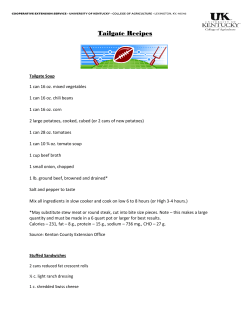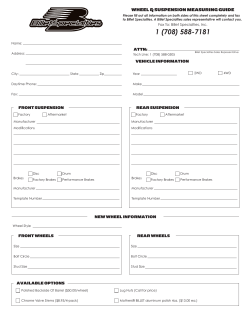
Cross-rolling piercing
No. 648,080. E. E. IlUlMBY. GROSS ROLLING PIEBOINE M (No Model.) Patented Apr. 24, I900. NE. (Application ?led Nov. 28, 1899. 2 Shaets-—Shebt I. 1110512197: No. 648,080. _ Patented ‘Apr. 24, I900. E. E. OUIMBY. GROSS ROLLING PIERCING MACHINE. (Application ?led Nov. 28, 1899.) (No Model.) 2 Shana-Sheet 2. affine/aye}. i425 Q0 w I ' 17114611107.’ g5“ W 1H: inlims PETER! co. mum-mull. wunmu‘ron. D. c. ' NrTED STATES ‘PATENT Eric. EDWARD EJQUIMBY, 0E ORANGE, NEW JERSEY, ASSIGNOR TO THE NATIONAL TUBE ooMPANY, 0E rrrrsnune, PENNSYLVANIA. CROSS-ROLLING PlERClNG-MACHINE. SPECIFICATION forming part of Letters Patent No. 648,080, dated April 24, 1900. Application ?led November 28, 1899. Serial No- 738,525. (No model.) T0 at” whom it may concern. trough which receives it while it is issuing Be it known that I, EDWARD E. QUIMBY, of Orange, New Jersey, have invented a certain from the pass. Improvement in Cross-Rolling Piercing-Ma fect may be of any desired size and of various 55 ' chines, of which the following is a speci?ca tion. forms, provided that those parts of their work and thereby transformed into a tube-blank. are arranged to be more or less convergent, , I The rolls for carrying the invention into ef ing faces which operate to reduce the diame This improvement relates to the class of ma ter of the billet, and which hence form what, chines for piercing solid billets by means of for present convenience, may be called the crosswise-acting rolls presenting a pass, in “reducing-pass,77 progressively diminish in 60 traveling through which a suitably-hot billet diameterin a ratio more rapid than the ratio in is subjected to a reduction in diameter and is which the reducing-pass diminishes in width. forced against the point of a piercing-punch, The rolls are mounted upon shafts which In cross-rolling piercing-machines hereto according to the ratio of diminution in the 65 fore employed the working faces of the rolls diameters of the red ucing-sections of the rolls, have been so proportioned as to diminish in and such ratio of diminution is determined diameter in a ratio corresponding to the ratio of diminution in diameter of the reduced sec by the number of convolutions of vbackward twist which it is desired to give to the work during the reducing operation. 70 tion of the billet, thus enabling the pass to im 20 part to the metal composing the reduced sec tion of the billet a uniform speed of rotation. The accompanying drawings, representing a pair of rolls embodying an illustration of In other cross-rolling piercing-machines the invention, are as follows: heretofore employed the billet during its prog ress through the pass is subjected to the ac Figure 1 is a top view showing in longitu dinal section a portion of a billet in the pass 75 ' tion of rolls'of gradually-increasing diameter and showing the piercing-mandrel by which or to the action of rolls the diameters of which the previously-reduced section of the billet do not diminish in as great a ratio as that in is pierced and ?nally expanded to its original which the diameter of the reduced section of external diameter. ‘Fig. 2 is a side elevation the billet diminishes, in either of which cases showing the oppositely-oblique‘ positions of 80 30 by an adequate expenditure of power the smaller end of the reduced section is forced to rotate more rapidly than the larger end, and there is thereby imparted to the metal a twist in the same direction as that in which 35 the billet is rotated. The present invention consists in so ar the rolls. As roll-housings and gearing for driving rolls are well known, it is not deemed neces sary to herein show them. The drawings-represent two similar rolls A 85 B, mounted, respectively, on shafts a b, lying in vertical planes which are more or less con ranging the rolls and so proportioning the vergent, as illustrated in Fig. 1. The shafts diameters of their reducing-faces that the ti and h are also inclined in opposite direc smaller end of the reduced section of the bil tions from the horizontal plane of the central 9o let will be made to rotate less rapidly than longitudinal axis of the pass, as indicated in the larger end, from which it results that there Fig. 2. The billet C is introduced into the is imparted to the metal of the reduced sec wider end of the pass, and the parts of the tion of the billet a backward twist-that is, a rolls which the billet ?rst encounters are, say, twist in the direction opposite the direct-ion six times the diameter of the billet. For ex 95 ' ample, if the original diameter of the billet 45 of rotation of the billet. The obvious advantages due to the result is four inches, the diameter of the, parts of ing lower speed of rotation at which the the rolls ?rst acting on the billet will be pierced billet is delivered are the greater con twenty-four inches. Assuming the billet in venience of handling and the diminution in its passage through the pass to be reduced to the friction encountered by the pierced billet three and three-quarter inches in diameter, by its contact with the stationary guide or the diameter of the rolls progressively di~ :1 648,080 changing the angles of convergence of the minishes, and at the end of the reducing-sec tion the rolls are, say, twenty-two inches in diameter, so that while the ratio of the diam vertical planes in which the shafts of the rolls lie. In all of these cases, however, as will be eter of the roll to the diameter of the billet at seen, the ratio of reduction in the diameters 50 of the red ueing-sections of the rolls is always to ?fteen at the end of the reducing-pass the greater'than the ratio of reduction in the ratio of the diameter of the roll to the diam width of the pass. The piercing-mandrel D is arranged in the eter of the reduced end of the billet is only as eighty-eight to ?fteen. I-Ience while the usual relation to the roll-pass, so that the ad 55 billet at the entrance to the pass is having vancin g billet is centrally pierced by the point imparted to it one revolution the end of the re (I of the conical head D’ of the mandrel. By duced section of the billet at the opposite end the action of the rolls the metal is driven for of the pass is having imparted to it a fraction ward and made to exude from the annular less than one revolution, and the consequent space between the base d’ of the mandrel~head retarding or holding back effect gives a back and the adjacent part a of each of the usual ward twist to the metal composing the reduced enlarging-sections E of the rolls. What is claimed as the invention is— section. The number of convolutions of this 1. In cross-rolling piercing-machines, rolls backward twist depends upon the number of revolutions of the billet during the reducing having reducing-sections of conical form ar 65 operation. As will readily be perceived, the ranged on opposite sides of a reducing-pass number 0t such revolutions may be varied by which progressively diminishes in width in increasing the angles of obliquity of the two a prescribed degree from its entrance end to the entrance to the reducing-pass is as ninety 20 rolls, in which case the billet will be driven for ward more rapidlyv and will therefore have a its discharge end; the said reducing-section of the rolls progressively diminishing in di 25 less number of revolutions imparted to it ameter in a ratio greater than the ratio of during the reducing operation and, of course, diminution in the width of the reducing-pass, in combination with asuitably'arranged point a less extensive backward twist, or the an gles of obliquity of the rolls may be dimin ished, in which case the billet will be driven forward with less rapidity and will have im parted to it a larger number of revolutions and a more extensive backward twist during its travel through the reducing-pass, or the extent of backward twist may be diminished ed mandrel for piercing the metal driven for ward by the action of the rolls. 75 2. In cross-rolling piercing-machines, in combination with a suitably-arranged pierc ing-mandrel, rolls having reducing-sections of conical form arranged on opposite sides of the reducing-pass, the said reducing-sections 35 by shortening the length of the reducing-pass progressively diminishing in their diameters and appropriately changing the angles of con in a ratio greater than the ratio of diminu vergence of the vertical planes in which the tion in width of the reducing-pass, whereby shafts of the rolls lie. Finally, the number the reduced section of the billet has imparted‘ of convolutions of the backward twist ini to its larger end a speed of rotation relatively 85 parted during the reducing operation may be greater than the speed of rotation imparted , increased by a more rapid and extensive re duction in the diameters of the reducing-sec tions of the rolls-as, for example, by pro gressively reducing the diameter of the re 45 ducing-section from twenty-four to twenty one inches and, of course, appropriately to its smaller end. . ED‘W. E. QUIMBY. \Vitnesses: A. M. JONES, E. GATTERER.
© Copyright 2025









